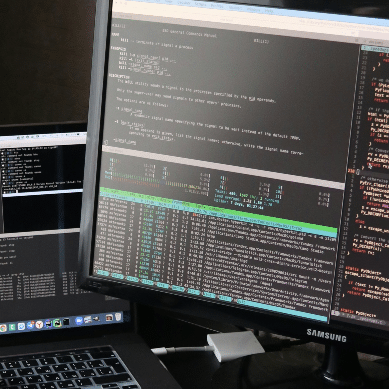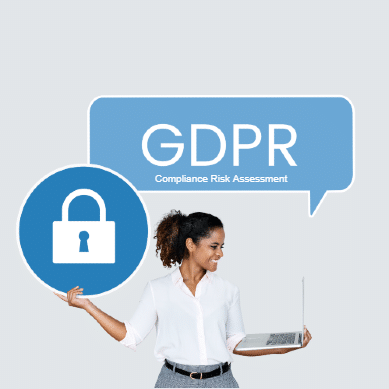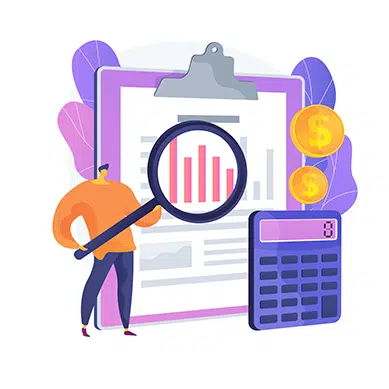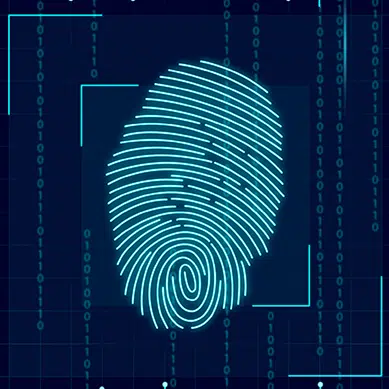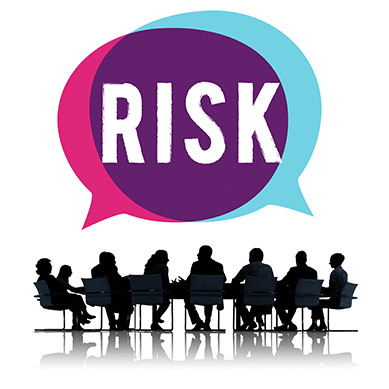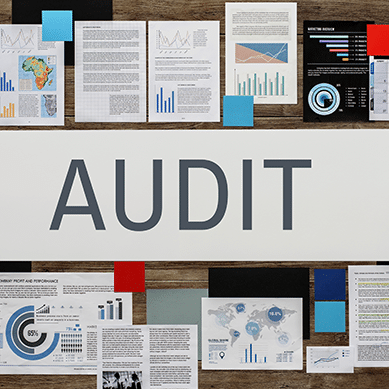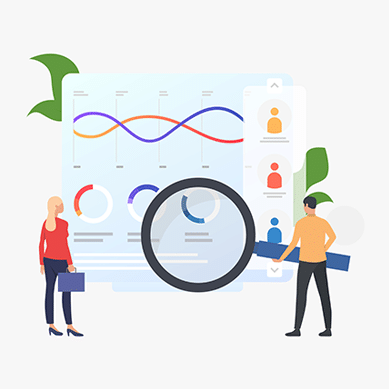
Centraleyes’s Glossary
We Consolidated Key Words, Phrases And Acronyms Into One Central Location.
This Glossary Will Help You Cut Through The Complexity To Fully Understand The Ins And Outs Of The Industry
- Yair Solow Featured on Bugy's Founder Interviews
- Centraleyes Chosen as Global Top 5 Startups of the Year - Interview
- Centraleyes on Cyber Ghost: Interview with Yair Solow
- Spotlight Q&A with Centraleyes at Safety Detectives
- Centraleyes Expands Automated Risk Register To Cover All Enterprise Risk
- New Centraleyes 4th Generation Release Officially Goes Live
- Yair Solow Featured on VPN Mentor
- Yair Solow on CNN
- CyGov Signs a Strategic Agreement with R3 (Spanish)
- Centraleyes Welcomes Co-Founder of Optiv, Dan Burns, to Its Board of Directors
- Centraleyes Continues to Expand Its Global Network of Strategic Partners with UK-based ITC Secure
- Centraleyes Introduces First Automated Risk Register
- Yair Solow Featured on Website Planet
- Trevor Failor named head of sales at CyGov
- CyGov is rebranding its platform as Centraleyes
- Cybersecurity Company Cygov Partners With Risk Management Company Foresight
- CyGov agrees strategic partnership with top 200 MSSP Cybriant
- Cyber Resilience Resource for Businesses Re-Deploying Remotely
- The Four New Pillars of Corporate Protection Yair Solow on InfoSecurity Magazine
- CyGov selected by SixThirty as Top Cyber Security Startup
- Europe's Top Cyber Security Startups
- CyGov Interviewed by MediaSet
- Eli Ben Meir's article in Security Intelligence
- Yair Solow on i24 News
- CyGov Selected by WorldBank
- Eli Ben Meir OpEd in the Houston Chronicle
- Yair Solow and Eli Ben Meir Present at the SparkLabs Demoday 8
- Enhance Your Cyber Maturity With ITSM Integration and Automated Remediation
- Ensure Your Ongoing Compliance With Automatic Framework Reassessment Tasks
- Stay in the Know With a Full Activity Log of Your Assessment Collection
- Add a New Entity to Perform Your Assessment in 10 Seconds
- Quantify Financial Risk With Centraleyes Platform Primary Loss Calculator
- Cover Your Entire Environment With Centraleyes's Risk Application Assessments
- Communicate Cyber Risk With Your Executives in an Intuitive, Beautifully Visualized Board Reporting
- Stay on Top of Your Vendors' Cyber History With In-Depth External Scans
- Automate the Creation and Maintenance of a Risk Register, Saving Hours on Manual Work
- Add a New Framework and Distribute Assessments in Your Organization
- View Your Organization's Risk Scoring Through the NIST Tiering Lens
- Most Intuitive Way for Compliance With the Framework Navigation Tool
- Always Prepared for the Next Task With Automated Remediation
- Effective Team Work With Drag-and-Drop Control Assignment
- Get Real-Time Critical Alerts That are Specifically Relevant to You
- MSSPs Can Manage Multiple Clients Under One Platform
- Onboard a New Vendor in Just 30 Seconds
- Turn Hours of Work Into Seconds with Centraleyes Vendor Risk Profile
- Always Informed with Centraleyes Domain Benchmarking
- Cisco Raises Concerns Over Surge in Brute-Force Attacks Targeting VPN and Web Services
- Bipartisan Proposal Sparks Hope for American Privacy Rights Act
- Microsoft Responsible for Made-in-China Hack that Targeted US Officials
- AI Gets an Endorsement from Coalition
- NIST NVD "Under Construction"
- TutaCrypt to Thwart 'Harvest Now, Decrypt Later' Attacks
- 9.8/10 Severity Flaw in Team City- Patch Now!
- Blackcat Claims Responsibility for the UnitedHealth Change Breach
- US Gov's Cyber Survival Guide for Water Utilities
- Safeguarding Elections Amidst the Deepfake Deluge
- Faking the Figures (and the Faces): Deepfake Financial Frauds
- Trello Got a Scrape
- Advisory Issued for Androxgh0st Malware
- X Marks the Spot: Mandiant and SEC's Security Sway on Twitter
- Quantum Quandary: Navigating the Path to Unbreakable Encryption
- Chameleon Android Banking Trojan Morphs with Advanced Tactics, Expands Targets
- Ubiquiti Resolves User Access Bug
- The U.S. Needs a Better AI Plan
- Navigating the Cyber Currents: Ensuring a Watertight Critical Infrastructure
- Dollar Tree Breach: Supplier Roots Sprout Risks
- Applying Digital Pressure to Stop the “Citrix Bleed”
- 30-Year-Old Medical Protocol Making Headlines
- 88 Million Americans Affected in 2023 By Healthcare Data Breaches
- Critical Atlassian Flaw Has a Simple Fix
- D.C. Voter Data Leak: What We Know So Far
- Centraleyes Leads the Way with Full PCI DSS 4.0 Compliance Support on its Innovative Platform
- Will the Real Admin Please Step Up?
- Straightening Out the curl Vulnerability
- Vague in the Hague: Who Is Behind the ICC Data Breach?
- Forever 21 Discloses Data Breach Impacting Over Half a Million
- FBI on a Wild Duck Hunt after Qakbot
- The Enemy Within: Tesla’s Data Breach Was an “Inside Job”
- NIST CSF is Getting a Makeover
- Russia Prime Suspect for UK Electoral Commission Cyber Attack
- Storm-0558 Isn’t Over Yet
- Google-Owned VirusTotal Data Leak: Result of Human Error
- Made-In-China Hack Infiltrates the US Government
- EU-U.S. Data Privacy Framework: Is Adequate Good Enough?
- Anonymous Sudan Or Anonymous Russia?
- Over 100,000 ChatGPT User Account Credentials For Sale on the Dark Web
- How to Build a Successful GRC Program to Help Reduce Your Risk Posture
- How to Stay Secure and Compliant in a World of Regulatory turmoil
- Don’t Keep Your Head in the Clouds – How to Protect Yourself from Virtual Risk
- Flash Webinar: How to Know When it's Time to Build a Risk Management Program
- Enhancing Cyber Risk Management Through the Power of Automation - Boutique Webinar
- Flash Webinar: From Technical to Business Risk - How to Communicate With Your Board
- Flash Webinar: What You Can Learn From the SolarWinds Attack to Lower Your Chances of Being Breached
- Flash Webinar: Supply Chain, 3rd-Party Vendors and the Silent Assassin Among Them
- Flash Webinar: Cyber Risk Management - it Doesn't Have to Be So Painful
- The Ultimate Guide to Excelling in Your External Audit: 5 Proven Strategies
- Digital Risk Types Demystified: A Strategic Insight into Online Threats
- FISMA Compliance: A Complete Guide to Navigating Low, Moderate, and High Levels
- Understanding the Different Types of Audit Evidence
- Data Loss Prevention: Best Practices for Secure Data Management
- What is Maryland’s Online Data Privacy Protection Act?
- Enhancing Security and Reducing Costs with Advanced Zero Trust Implementation
- Navigating Legal Challenges of Generative AI for the Board: A Strategic Guide
- Exploring the Cost of a Data Breach and Its Implications
- Best 5 Privacy Management Tools for 2024
- Introduction to ISO 42001 and Its Impact on AI Development
- The Best SIEM Tools To Consider in 2024
- The 11 Best GRC Tools for 2024
- 8 Best Compliance Automation Tools: How to Choose
- The Best 10 Vendor Risk Management Tools
- Best 8 Vulnerability Management Tools for 2024
- Protecting Patient Data Post-Change Healthcare Breach
- Ensuring Business Resilience: Integrating Incident Response and Disaster Recovery Plans
- Understanding the Key Updates in NIST Cybersecurity Framework 2.0
- What's in the NIST Privacy Framework 1.1?
- The 5 C’s of Audit Reporting
- Cloud Compliance Frameworks: Ensuring Data Security and Regulatory Adherence in the Digital Age
- Generative AI Governance: Balancing Innovation and Ethical Responsibility
- Overview of AI Regulations and Regulatory Proposals of 2023
- Risk and Regulation: A Strategic Guide to Compliance Risk Assessment
- Understanding the ISO 27001 Statement of Applicability in Cybersecurity
- 5 Benefits of Identity and Access Management
- Unveiling the Threat Landscape: Exploring the Security Risks of Cloud Computing
- Future of Compliance: 2024's Essential Cybersecurity Insights
- What Do You Do if You Have a Third-Party Data Breach
- 7 Steps to Measure ERM Performance
- The EU AI Act: What It Means for Your Compliance
- How Do You Quantify Risk? Best Techniques
- How to Prepare for Compliance With the SEC Cybersecurity Rules Update
- Protecting Endpoints in an Evolving Threat Landscape
- The Goals of Security Compliance
- Data Privacy in the United States: A Recap of 2023 Developments
- Introduction to the NIST AI Risk Management Framework (AI RMF)
- NIS2 Framework: Your Key To Achieving Cybersecurity Excellence
- Comprehensive Third-Party Risk Assessment Checklist for Robust Risk Management
- Cyber Leaders of the World: Chris Lockery, CISO at Help at Home
- Cyber Leaders of the World: Michael Anderson, CISO at the Dallas Independent School District
- Cyber Leaders of the World: Timothy Spear, Co-Founder and CTO of Whonome
- Cyber Leaders of the World: Marc Johnson, CISO at Impact Advisors
- Cyber Leaders of the World: Craig Williams, CISO at Secure Data Technologies
- Cyber Leaders of the World: Bill Genovese, CIO Advisory Partner at Kyndryl
- Cyber Leaders of the World: Dr. Brian Callahan, Graduate Program Director & Lecturer at ITWS@RPI, and CISO at PECE
- Cyber Leaders of the World: Chris Grundemann, Research Category Lead for Security and Risk at GigaOm
- Cyber Leaders of the World: Barak Blima, CISO at CHEQ
- Cyber Leaders of the World: Tony Velleca, CEO at CyberProof and CISO at UST
- Cyber Leaders of the World: Rob Black, CEO and Founder of Fractional CISO
- Cyber Leaders of the World: Zachary Lewis, CISO at the University of Health Sciences and Pharmacy in St. Louis
- Cyber Leaders of the World: Dan Wilkins, CISO at the State of Arizona
- Cyber Leaders of the World: Sagar Narasimha, CISO at Amagi
- Cyber Leaders of the World: Seema Sharma, Global Head of Information Security & Data Privacy at Servify
- Cyber Leaders of the World: Shay Siksik, VP of Customer Experience at XM Cyber
- Cyber Leaders of the World: Raz Karmi, CISO at SimilarWeb
- AI Auditing
- Data Exfiltration
- Data Sovereignty
- Control Objectives for Information and Related Technologies (COBIT)
- Audit Management Software
- Vendor Framework
- AI Governance
- AI Transparency
- Internal Penetration Testing
- Cybersecurity Automation
- GDPR Compliance Risk Assessment
- Audit Fatigue
- Compliance Operations
- Risk Management Automation
- Corporate Sustainability Reporting Directive
- Man-in-the-Middle Attack
- Digital Rights Management
- Content Disarm and Reconstruction
- Calculated Risk
- Data Residency
- Asset Risk Management
- Identity Security
- Risk Modeling
- CISO Board Report
- Risk Communication
- SOC 2 Bridge Letter
- Audit Documentation
- Enterprise Risk Management (ERM)
- Compliance Gap Analysis
- Security Misconfiguration
- Security Program Management
- Digital Risk Protection
- Advanced Persistent Threat
- Continuous Auditing
- Risk Control
- SSAE 16
- ISMS Awareness Training
- Risk Management Policy
- Risk Avoidance
- Resilience Management
- What are the main steps in the threat modeling process?
- What exactly is considered PHI according to HIPAA?
- What does the PCI Compliance Auditor Look At?
- How to Detect and Prevent Data Leakage?
- What are the Challenges Associated with Cloud Security Management?
- How Many Techniques Are There in MITRE Att&ck?
- What Are the Benefits of Conducting a Risk Assessment?
- What are the categories of controls in ISO 27001?
- How Does ABAC Differ From Other Access Control Models?
- What Does a Compliance Management System Look Like?
- What Are the NIST CSF Implementation Tiers?
- What is the Purpose of Compliance Attestation?
- How do I become NIST 800-171 compliant?
- Why are the three rules of HIPAA necessary?
- What are the seven categories of risk?
- What are the Six Types of Vulnerability Scanning?
- Which are the most important compliance frameworks?
- How do you implement GRC automation?
- How Can I Measure the ROI of Implementing a Compliance Solution?
- How do you determine whether HIPAA violations need to be reported?
- What are the three major threats to cybersecurity today?
- How Do You Manage Compliance Risk?
- How Does a GRC platform handle data privacy and security?
- How Often Should Supplier Risk Assessments Be Conducted?
- How is a SOC 2 Report Structured?
- What Are the Major Risk Factors in Cyber Security?
- How Do You Read a Risk Matrix Table?
- What is the Risk Rating Matrix Used For?
- What are the Benefits of Risk Assessment Software?
- How does the CMMC differ from NIST?
- What are the penalties for not reporting a HIPAA violation?
- What are the different versions of HECVAT?
- What are the 4 objectives of Enterprise Risk Management?
- Who needs to be ITAR compliant?
- What are the best practices for vendor risk management for CISOs?
- What are the three stages of the zero-trust security model?
- What are the NIST control families?
- Can ChatGPT replace compliance officers?
- How can thread modeling help an organization identify and mitigate potential risks?
- What is the average cost of penetration testing?
- Last Resources
Resources | Glossary
What is an AI Audit? AI audits determine whether an AI system and its supporting algorithms follow secure, legal, and
What Is Data Exfiltration? Data exfiltration is the unauthorized removal or moving of data from or within digital devices. Data
What is Data Sovereignty? Data sovereignty asserts that digital data is subject to the laws of the country in which
What is Control Objectives for Information and Related Technologies (COBIT)? COBIT 5, developed by the Information Systems Audit and Control
What is Audit Management Software? Audit management software is the cornerstone of organizations’ efficient audit oversight, governance, and procedural management.
What is a Vendor Framework? In today’s turbo-charged business world, we’re all about connections, which means relying on third-party vendors
What is AI Governance? AI governance refers to the comprehensive principles, policies, and practices that guide the ethical development, deployment,
In today’s digital age, where AI algorithms wield immense power in shaping our lives, understanding how these algorithms make decisions
Internal penetration testing is a proactive approach to assess the security posture of an organization’s internal network infrastructure. Unlike external
What is Cybersecurity Automation? Cybersecurity automation involves the use of technology, algorithms, and predefined processes to automatically handle and execute
Embarking on the GDPR (General Data Protection Regulation) compliance journey inevitably brings us face-to-face with a pivotal requirement: regular risk
What is Audit Fatigue? Audit fatigue arises when organizations face numerous and repetitive security and compliance audits, leading to resource
What Are Compliance Operations? Compliance operations encompass multifaceted processes and activities undertaken by organizations. They systematically identify, assess, and mitigate
What is Risk Management Automation? Automated risk management involves using advanced technologies to identify, assess, and mitigate potential risks systematically
EU’s Corporate Sustainability Reporting Directive (CSRD), in effect since January 5, 2023, mandates EU businesses, including qualifying EU subsidiaries of
What is a Man-in-the-Middle Attack? A Man-in-the-Middle (MitM) attack is a cybersecurity threat where an unauthorized actor intercepts and sometimes
What Are Digital Rights? Digital Rights refer to the permissions and restrictions associated with using digital content, such as text,
What is Content Disarm and Reconstruction? CDR is a cybersecurity technique that disassembles and reconstructs files to ensure they are
Merriam-Webster’s definition of calculated risk: Calculated Risk in Cyber Risk Management In the context of cyber risk management, a calculated
In the digital era, where information traverses borders effortlessly, data residency has emerged as a critical consideration for organizations navigating
Asset Risk Management in cybersecurity is identifying, assessing, and mitigating risks associated with an organization’s digital assets. These digital assets
What is Identity Security? Identity security refers to a comprehensive approach to safeguarding all forms of identities within an organization,
What is Risk Modeling in Cyber Security? At the core of cyber security risk management lies the discipline of cyber
What is a CISO Board Report? A CISO board report is a strategic document that bridges the communication gap between
What is Risk Communication? Risk communication is a strategic process of sharing and disseminating information about potential digital risks and
Compliance and data security might not be the most thrilling subjects, but they are essential in the digital age. In
What Is Audit Documentation? Audit documentation is a detailed account of procedures, evidence, and conclusions collected during an audit. It
What is ERM? Enterprise Risk Management (ERM) is a comprehensive approach primarily focused on addressing a business’s strategic risks, encompassing
What is Compliance Gap Analysis? Compliance gap analysis, often referred to simply as gap analysis, is a vital process that
What is a Security Misconfiguration? Security misconfiguration refers to the improper or inadequate configuration of software, hardware, applications, or network








